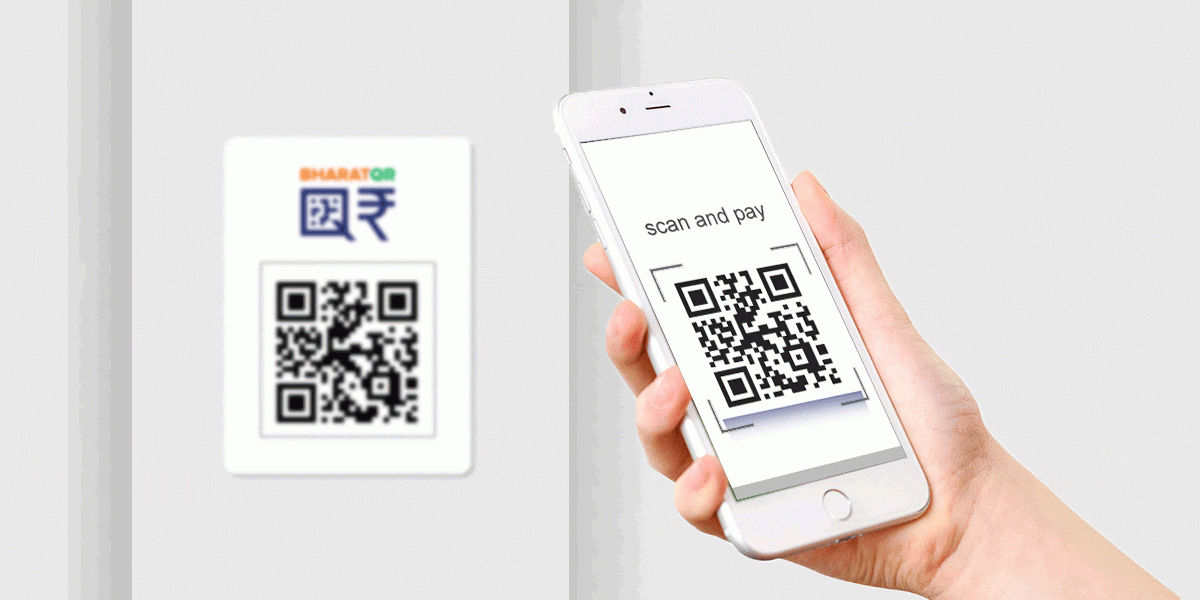BHARAT QR allows all cards and UPI users to transact seamlessly across banks. Due to the apparent increased use of smartphones and the internet, the payments sector in India has seen a dramatic increase in QR Code-based payment solutions. Merchants can acknowledge digital payments with Bharat QR even if they don’t have a card swiping machine. Following demonetization, the government has launched a slew of cashless projects: the BHIM software, Aadhar-enabled payments, and the Digital payment platform for feature phones. Bharat QR code has acquired widespread adoption as a cost-effective alternative to traditional payment methods. The government’s initiatives and various local Internet firms releasing new payment options have aided its development. Users may pay their utility bills quickly and easily using Bharat QR-enabled mobile banking applications. The user makes the payment without disclosing any personal information to the merchants. Let’s get into it!
Decoding Bharat QR
The BHIM (Bharat Interface for Money) software, a unified UPI app, was released to make procedures far more accessible and safer, rather than create a situation where UPI QR Code versus Bharat QR Code. Bharat QR is recognized for employing one-of-a-kind QR codes to make merchant-to-person (M2P) transactions easier. Users may pay utilizing Bharat QR-enabled digital financial services when the QR codes are put in stores, picking a payment method without exposing user information.
A QR or a Quick Response code is a machine-detectable data matrix that provides the information needed to accept payments from customers. The Bharat QR code stores information such as a person’s name, contact information, business name, bank data, etc. Furthermore, using this method of payment is relatively safe and secure.
How Can Your Business Benefit From It?
According to industry forecasts, non-cash spending will soon surpass cash expenditures. One of the most critical criteria for facilitating electronic transactions is infrastructure. Bharat QR also practically eliminates the requirement for building and operations costs.
Here’s how this type of payment may benefit your business:
Allow Customers To Conduct Cashless Transactions.
Customers do not need a physical credit or debit card to conduct cashless purchases. Bharat QR-enabled banking applications on mobile phones are used to make payments. This pay later payment system takes Visa, MasterCard, American Express, Rupay cards, and BHIM-UPI for broad acceptance. Depending on your needs, you may link many credentials to your Bharat QR-enabled bank apps and pick which one you wish to use.
Integrated With Bigger Banks
Leading banks and service providers, including HDFC Bank, State Bank of India, Paytm, Phone Pe, and others, have enabled integration with Bharat QR. Consequently, regardless of which bank or wallet provider they use to store their funds, all users may now effortlessly trade.
Safe Payment
A customer’s credit card information will never be shared with a third party. You do not need to physically hand over your debit or credit card to make payments. As a consequence, there is no risk of data stealing. You do not have to enter or provide your mobile number or account details to make a payment.
Sheen Customer Experience
With the Bharat QR UPI standards, separate wallet apps are no longer required. Your customers may now use any app connected to their bank account that is BHIM-enabled (Bharat Interface for Money). As a trader, you ought to have the BHIM-UPI app to obtain a unique Bharat QR code. Customers may scan the QR code to deposit money directly into their accounts. No more physical or technological participation is essential.
Unlimited Payment
As a seller, there are no boundaries on the number of transactions you make via Bharat QR each month. Additionally, monies are paid into your account immediately following settlement using Immediate Payment Services (IMPS). Cashless payment is quick and straightforward because no intermediary digital link connects your budget and the customer’s account.
How To Generate A QR Code For Your Business?
1. Connect your bank account to the BHIM app.
2. Create a QR code that is particular to your company using the BHIM app.
3. Print the code and place it anywhere in the store where consumers may see it so they can scan it with their phone.
Finally, you will receive a notification after the consumer has made a payment.
Conclusion
With a growing number of connected, informed smartphone users, QR codes are a smart bet for the future. It adds another scalable payment mechanism to the mix. It’s usually a good idea to provide customers and merchants with various options.













